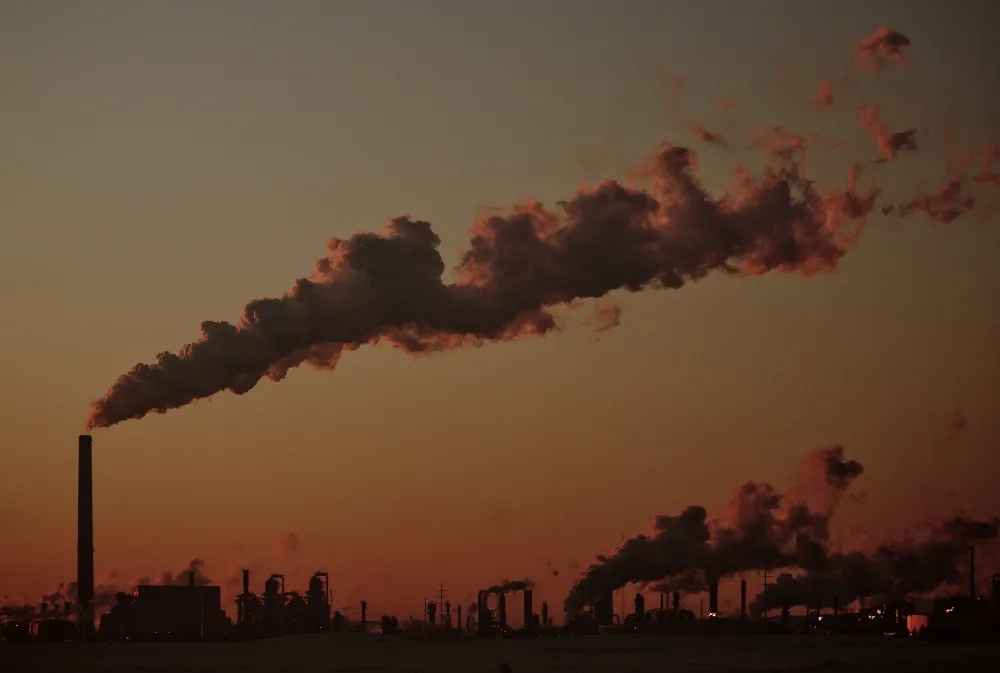CALGARY — In a new report, the Pembina Institute documents the overall rise in greenhouse gas emissions from Canada’s oilsands, the conflict with the country’s 2030 and 2050 climate commitments, and how governments and industry can help ensure the sector remains competitive as it improves carbon performance.
The oilsands in a carbon-constrained Canada: The collision course between overall emissions and national climate commitments acknowledges that while industry has worked toward decreasing the emissions intensity of its products, overall emissions are rising, making the sector the fastest-growing source of emissions in the country.
The report uses the best available research and data to clearly outline carbon intensity differences across the sector, and the difficulty of making generalized claims about carbon emissions intensity performance. It highlights the fact that more carbon-intense crudes will be at risk of being stranded as the market demands less carbon-intensive sources of oil.
In The oilsands in a carbon-constrained Canada, the Pembina Institute includes detailed recommendations for the federal and Alberta governments, and industry, to ensure the oilsands sector decreases its absolute emissions in line with Canada's climate commitments and remains competitive in a decarbonizing, 21st-century global economy:
- Establish strong regulations to decarbonize the industry;
- Define and enforce sector emissions targets for 2030 and 2050, with five-year increments;
- Support an innovation ecosystem to deliver breakthrough technologies, funded by industry;
- Improve emissions monitoring and reporting to produce coherent data and enhance transparency;
- Appoint transparent and independent energy regulators both federally and provincially, with the mandate to enforce regulations and capacity to follow through.
Quotes
“The global problem of climate change is too complex for any of us to solve alone. We urgently need to work together to prepare Canada to compete in a low-carbon economy. That includes a fact-based discussion about the role of the oilsands, which is the fastest-growing source of emissions in Canada. We need a constructive and thoughtful conversation – let’s not shy away from it.”
— Simon Dyer, Executive Director, Pembina Institute
“The pathway to make Canada’s oilsands carbon-neutral will not be easy, and will only be more difficult if the discussion is not grounded in fact. This report answers some of the key questions around oilsands and describes the challenge to go well beyond the incremental gains that have been made to dateto reduce total emissions for the sector by 2030 and ultimately achieve net-zero emissions by 2050. Our recommendations will help the sector decarbonize to remain attractive to investors and help Canada meet climate commitments.”
— Chris Severson-Baker, Alberta Regional Director, Pembina Institute
“Although the carbon intensity of the oilsands has decreased in the past decades, overall carbon emissions from the sector continue to increase. Meeting national climate commitments comes down to a question of drastically reducing absolute emissions. The oilsands’ competitiveness will depend on the ability to rapidly implement meaningful policy changes and deploy breakthrough innovation – beyond incremental improvements – that will dramatically lower Canada’s oilsands emissions intensity to the low end of the global oil supply curve.”
— Benjamin Israel, Senior Analyst, Pembina Institute
Quick facts
- Carbon emissions from the oilsands sector are the fastest-growing source of emissions in Canada.
- Oilsands products are not homogeneous and there is a threefold range in performance when it comes to emissions per barrel.
- The oilsands industry has worked towards decreasing the emissions intensity of its products in the past decades.
- Despite these improvements in carbon intensity, absolute carbon emissions from the oilsands continue to increase overall, and could represent 22% of Canada’s carbon budget in 2030.
- Studies reviewed for this report consistently find oilsands products to be more carbon intensive than lighter, more conventional oil sources.
- Global shifts toward lower intensity energy options, including projections of global oil demand plateauing or declining in the coming decade, are likely to put more carbon intense crudes — such as the bulk of oilsands products — at risk in the near future.
- The rapid development and deployment of breakthrough technologies is needed for the sector to decrease its absolute carbon emissions in line with our climate commitments — and to remain competitive as global energy systems change.
[30]
Contact
Michelle Bartleman (English / français)
Communications Lead – Alberta, Pembina Institute
587-588-5744
Sarah MacWhirter
Communications Director, Pembina Institute
416-389-7465
Background
Fact sheet: The oilsands in a decarbonizing Canada (November 2018)
Policy Document: Energy Leadership in Alberta (February 2019)
About the Pembina Institute
The Pembina Institute is a non-profit think-tank that advocates for strong, effective policies to support Canada’s clean energy transition. We have offices in Vancouver, Calgary, Edmonton, Ottawa and Toronto. Learn more: www.pembina.org.




